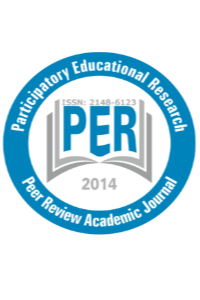
Participatory Educational Research
Yazarlar: Kofi Poku QUAN-BAFFOUR
Konular:Eğitim, Bilimsel Disiplinler
DOI:10.17275/per.14.17.2.1
Anahtar Kelimeler:Participatory- exploratory study,Vulnerability,Mitigation,Human trafficking,Unemployment,Youth
Özet: Due to paucity of industries work opportunities in the rural areas in Ghana are very limited. Many youths complete high school and cannot get employed because they are not skilled and on the account of limited job opportunities. As a native and a frequent visitor to the area of study (Bono Ahafo) the researcher became aware of the situation where unemployed youth have virtually fall prey to overseas work scam. The so-called connection men/women take advantage of the unemployed youth who dream of better life in the cities and overseas destinations. They charge them huge sums of money with promise of work and manage to smuggle the unsuspected youth overseas. The plight of some victims of human trafficking informed the choice of this exploratory participatory study. This participatory study which took place in four rural municipalities involved some victims of the scam, their parents and relatives in face to face interviews.